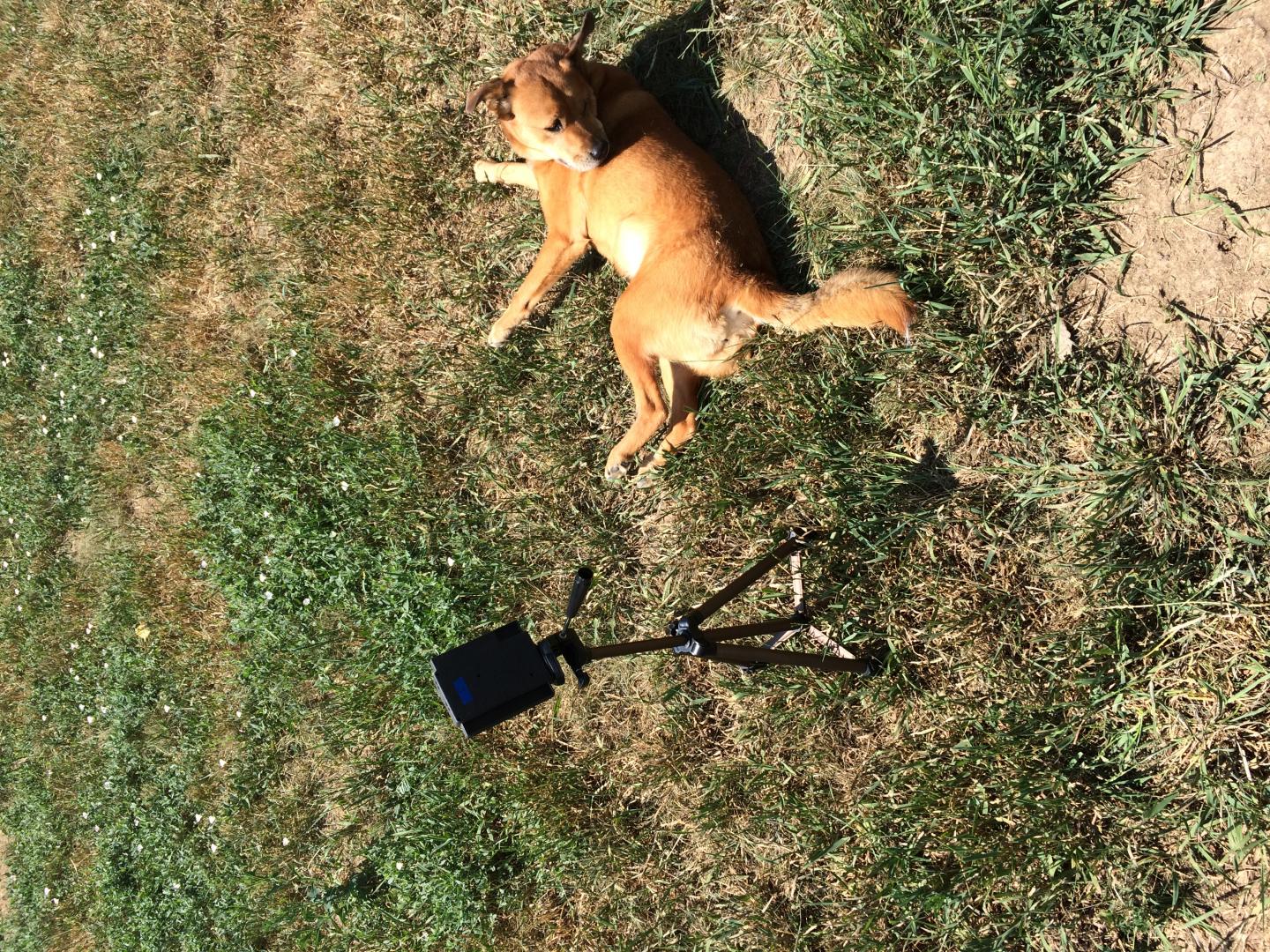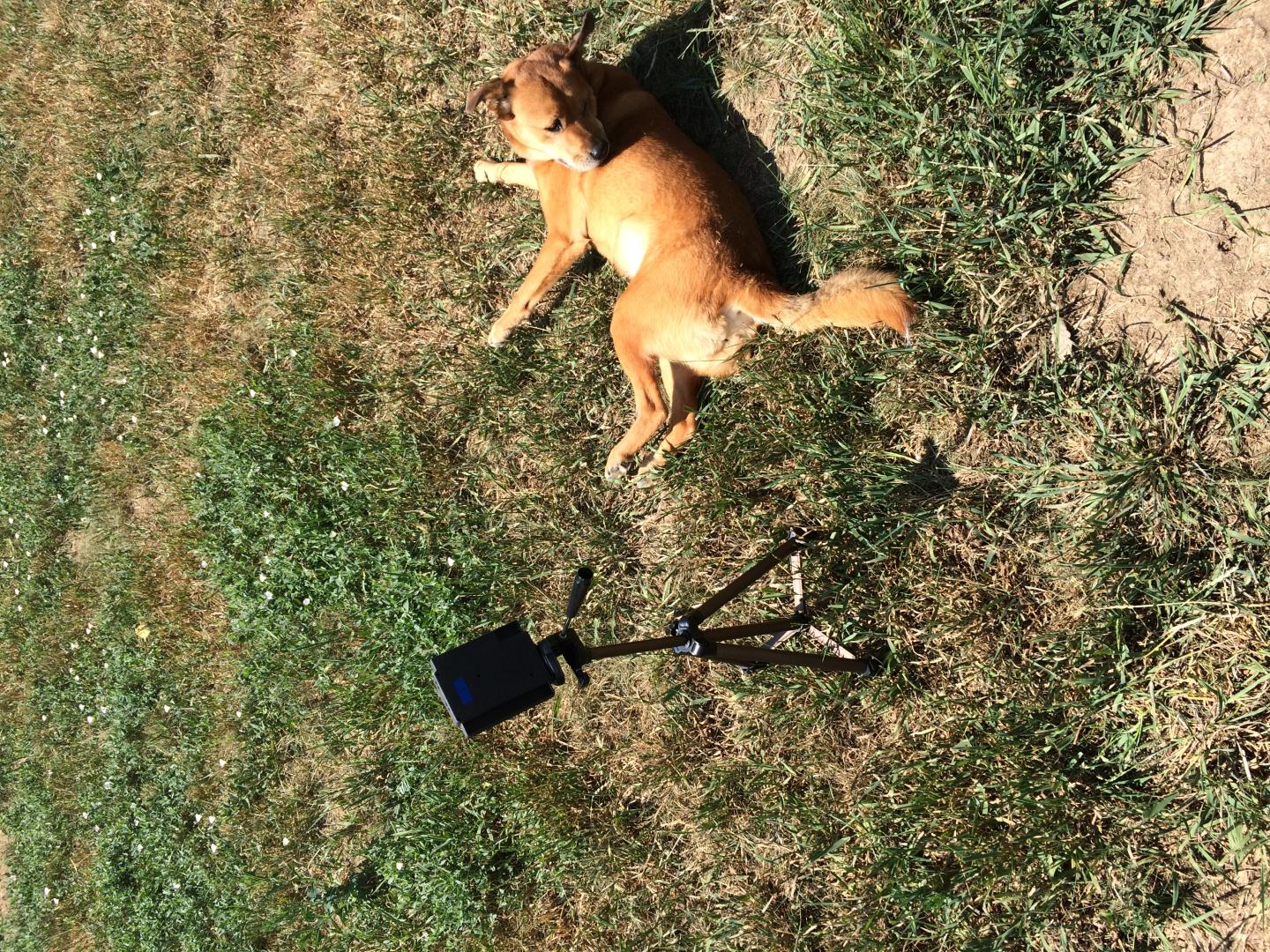
Credit: Provided/CSU CEAMS
What's portable, self-contained, solar-powered, and can take precise measurements of how dirty the air is in someone's backyard?
That would be some uniquely user-friendly, cost-effective air samplers designed by Colorado State University researchers. Soon, many more of these samplers will be taking air quality measurements across Colorado, the Northwest and southern California - powered by the sun, and by willing volunteers.
The Citizen-Enabled Aerosol Measurements for Satellites (CEAMS) project, a CSU-led, NASA-funded effort for measuring local air quality, has just received the green light for full speed ahead. Following a successful pilot phase in Fort Collins over the past year, NASA has re-upped CEAMS to the tune of $1.6 million over three years. That means recruiting even more citizen scientists, deploying more air samplers, and crunching a lot more data.
Eventually, it means more knowledge to share with NASA's Earth Science Research Program. The agency's air quality-indicator satellites that fly overhead only provide broad estimates of global air quality. Ground-level, dispersed measurements from CEAMS could lead to improved satellite-derived pollution estimates, at higher spatial and temporal resolutions. This will help scientists better understand where the air is dirtiest, when and why.
The CEAMS samplers take two critical measurements. One is aerosol optical depth, which is a picture of how much particulate matter is present in a column of air from Earth to space. The other is ground surface PM2.5 – a measure of airborne particulate matter with diameters smaller than 2.5 microns, which are proven to affect human health.
The team, composed of several CSU scientists, graduate students and other collaborators, aims to have 250 CEAMS samplers deployed by project's end. The Fort Collins pilot involved about 15 volunteers.
The team is led by:
- – John Volckens, principal investigator; professor of mechanical engineering; affiliate faculty in the Colorado School of Public Health, School of Biomedical Engineering, and Department of Environmental and Radiological Health Sciences; member of the CSU Energy Institute
– Bonne Ford, project manager; research scientist in the Department of Atmospheric Science
– Shantanu Jathar, co-investigator; assistant professor of mechanical engineering; member of the CSU Energy Institute
– Marilee Long, co-investigator; professor of journalism and media communication
– Jeff Pierce, co-investigator; associate professor of atmospheric science; Monfort Professor
They plan to expand their data collecting to Denver, as well as to Los Angeles, Washington, and Idaho. For these efforts, they'll involve new collaborators: Sheryl Magzamen, assistant professor in the CSU Department of Environmental and Radiological Health Sciences, and others from University of British Columbia, Dalhousie University in Nova Scotia and Research Triangle Institute.
"Each location was chosen to look at known difficulties in relating satellite observations to surface air quality: urban air quality, coastal environments, and biomass burning regions," project manager Ford said.
They will also continue to work with a 20-year-old, highly successful citizen science network also based at CSU: the Community Collaborative Rain, Hail and Snow Network, which has over 20,000 volunteers nationwide. A handful of CEAMS volunteers were chosen from willing CoCoRaHS participants, who – no surprise – were among the most self-sufficient and motivated volunteers in the pilot run, the scientists reported.
In designing any product, user testing is essential – and that's especially true for citizen science. "Our volunteers provided lots of great feedback that helped us to improve the instruments, our mobile app, and our sampling strategy," Ford said.
For example, many volunteers reported trouble with correctly aligning the aerosol optical depth sensor, which needs to be in direct sunlight. The team plans to add a reflective bead to help the citizens identify when the sensors are properly aligned.
The team also plans to increase the wireless capability of each CEAMS sampler. They propose adding a WiFi chip to the devices, in addition to existing Bluetooth-powered communication, so data can stream automatically from the samplers to project servers.
Other technical enhancements planned: low-voltage checks to detect the presence of clouds (cloudy days are no good for accurate aerosol optical depth measurements), and accelerometers to detect when wind has caused misalignment.
Ask any of the scientists working on CEAMS, and they will all say they are motivated by a sobering fact: air pollution kills. It's a leading cause of death worldwide, it gives kids asthma, and it exacerbates health problems for vulnerable people including the very young and the very elderly.
"Our hope is that our project will help tackle the global challenge of air pollution," principal investigator Volckens said. "But we can't do it without our wonderful volunteers. That's what's going to make this project work, and that's ultimately what's going to lead to fewer deaths and illnesses from air pollution."
###
Media Contact
Anne Manning
[email protected]
970-491-7099
@ColoStateNews
Original Source
https://source.colostate.edu/powered-by-citizen-volunteers-air-pollution-study-gets-1-6-million/






